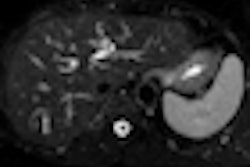CHICAGO - In tight economic times, more researchers are seeking to compare the costs of multiple techniques used to treat particular diseases to find a way to provide the best cost-effective clinical care.
Dr. Christoph Zech of Munich University Hospitals in Grosshadern, Germany, and colleagues performed this kind of economic evaluation for three initial diagnostic imaging strategies for patients with known or suspected colorectal liver metastases: Primovist-enhanced MRI (Bayer HealthCare Pharmaceuticals, Wayne, NJ), extracellular contrast-media MRI, and three-phase MDCT.
Zech presented findings from the model at this year's RSNA meeting.
"The resources for medicine are limited, even in Western countries," Zech said. "There is a strong tendency to implement diagnostic or therapeutic strategies according to their cost-effectiveness."
Data were collected through interviews with 13 pairs of physicians -- each pair consisting of a radiologist and a liver surgeon -- in Germany, Italy, and Sweden. The methodology used to determine costs of the three different techniques included estimates from hospitals for the cost of imaging procedures, the amount of time surgery took, the amount of time a patient spends in standard or intensive care, and the official price lists for contrast agents in each country.
The researchers found that among the three techniques, the rate of further imaging needed after an initial scan was:
- 8.6% after initial Primovist-enhanced MRI
- 18.5% after extracellular contrast-media MRI
- 23.5% after MDCT
The rate of confirmed findings at surgery was 81.4% if Primovist-enhanced MRI was used as the first imaging modality, compared with 74.3% for extracellular contrast-media MRI and 74.8% for MDCT.
The rate of unnecessary surgery for the techniques was:
- 5.7% with Primovist-enhanced MRI
- 8.6% with extracellular contrast-media MRI
- 8.3% with MDCT
Considering all diagnostic workup, intraoperative treatment changes, and the cost of unnecessary surgery, in Sweden a treatment protocol that began with Primovist-enhanced MRI cost $1,219 (959 euros), compared with extracellular contrast-media MRI at $1,427.95 (1,123 euros) and MDCT at $1,327.52 (1,044 euros). In Italy and Germany, Primovist-enhanced MRI was cost-saving compared to extracellular contrast-media MRI and had similar total costs compared to MDCT.
Zech emphasized that the study used only interview data, and that clinical data are needed to confirm its results. But he concluded that using Primovist contrast agent first is the most cost-effective choice.
"Even if the cost of initial imaging is higher for Primovist-enhanced MRI than for MDCT and extracellular contrast-media MRI, lower costs for additional imaging and fewer changes in preoperative planning lead to lower total cost for Primovist-enhanced MRI compared to extracellular contrast-media MRI, and at least similar cost compared to MDCT," Zech said.
By Kate Madden Yee
AuntMinnie.com staff writer
December 3, 2008
Related Reading
PET scan facilitates decision-making for colorectal metastases in liver, January 10, 2007
Colon polyps accurately measured using automated and manual 3D techniques, January 5, 2007
Imaging unreliable for detection of colorectal liver cancer metastases, September 6, 2006
Copyright © 2008 AuntMinnie.com


















